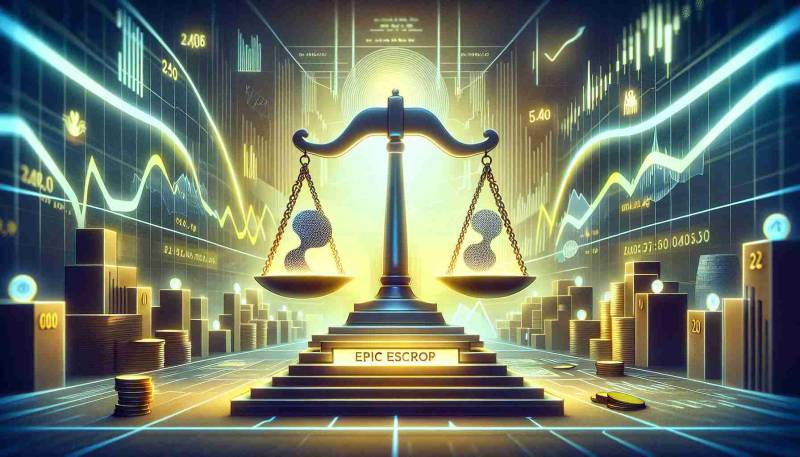 |
|
 |
|
 |
|
 |
|
 |
|
 |
|
 |
|
 |
|
 |
|
 |
|
 |
|
 |
|
 |
|
 |
|
 |
|
This article is featured in the latest issue of The Protocol, our weekly newsletter exploring the tech behind crypto, one block at a time. Sign up here to get it in your inbox every Wednesday.

Fresh off the heels of completing a $100 million Series B funding round, Etherealize is aiming to bring Ethereum to Wall Street. Founded by former banker Vivek Raman, Etherealize is on a mission to make ETH a serious asset class.
“I came to crypto after a decade in banking, and I feel like I have a unique perspective having seen both sides of the table,” Raman told CoinDesk. “I discovered crypto in 2017 and left banking in 2018. I spent the next four years building the relationships and the company, and we chose to launch in January because it’s a time of heightened market optimism driven by expectations of a crypto-friendly White House.”
While Ethereum grapples with internal disputes and price stagnation, Etherealize has been quietly marketing ETH on Wall Street. In an interview with CoinDesk’s Margaux Nijkerk, Raman discusses how he came to create Etherealize, how that group is marketing ETH on Wall Street and banks’ views on layer-2 rollups.
CoinDesk: Tell me a little bit about your background and how you came to create Etherealize.
Vivek Raman: I was born in India and moved to the U.S. when I was 10 years old. I grew up in New Jersey and went to college at the University of Pennsylvania, where I studied economics and international relations. After graduating, I worked at Goldman Sachs for seven years in the commodities division, trading precious metals and energy derivatives.
In 2017, I discovered crypto and became fascinated by the technology and its potential to revolutionize finance. I left banking in 2018 to join Polychain Capital, where I worked for two years as an investment associate.
During my time at Polychain, I became increasingly interested in the intersection of traditional finance and crypto. I saw an opportunity to create a company that could bridge the gap between the two worlds and help to bring ETH to a broader audience.
I founded Etherealize in 2020 with the goal of making ETH a serious asset class. The company is a liquidity provider and market maker for ETH, and we also work with banks and other institutions to help them understand and adopt Ethereum technology.
CoinDesk: What are some of the challenges you've faced in marketing ETH on Wall Street?
Vivek Raman: One of the biggest challenges has been educating people about Ethereum. Many people in traditional finance are still not familiar with the technology or its benefits.
We also face challenges due to the regulatory environment. Crypto is still largely unregulated in the U.S., which can make it difficult for banks and other institutions to adopt the technology.
CoinDesk: What are banks' views on layer-2 rollups?
Vivek Raman: Banks are generally interested in layer-2 rollups because they have the potential to improve the scalability, cost and efficiency of Ethereum transactions.
However, banks are also concerned about the security and reliability of layer-2 rollups. They want to make sure that their customers' funds are safe and that transactions will be processed quickly and reliably.
We expect that banks will begin to adopt layer-2 rollups in 2023 as the technology matures and is proven to be secure and reliable at scale.
Disclaimer:info@kdj.com
The information provided is not trading advice. kdj.com does not assume any responsibility for any investments made based on the information provided in this article. Cryptocurrencies are highly volatile and it is highly recommended that you invest with caution after thorough research!
If you believe that the content used on this website infringes your copyright, please contact us immediately (info@kdj.com) and we will delete it promptly.
-

- Ripple Locks 700 Million XRP in Escrow: A High-Stakes Gamble or a Strategic Shield?
- Feb 06, 2025 at 10:56 am
- Ripple's decision to lock 700 million XRP into escrow serves as a robust strategy to stabilize its token amidst market volatility. This move, by limiting the available supply of XRP, aims to prevent a free-fall in its value.
-

-

-

-

-

-

-

- XRP, SOL, DOGE Price Analysis: Key Levels to Watch as the Market Takes a Turn
- Feb 06, 2025 at 10:46 am
- XRP's price has plummeted below the 50 EMA, which frequently serves as a crucial support for bullish momentum. Solana (SOL) is at a turning point with its price hovering just above $200. Dogecoin is approaching a turning point as it approaches the 200 EMA
-

- Dogecoin (DOGE) Price Prediction: DOGE Might Still Hit $10 This Cycle, Here's the Timeline
- Feb 06, 2025 at 10:46 am
- Dogecoin is still reeling in losses after a crazy 40% decline at the start of the week. Although it has since recovered a bit, Dogecoin is still on a 20% loss in a seven-day timeframe at the time of writing.





























































